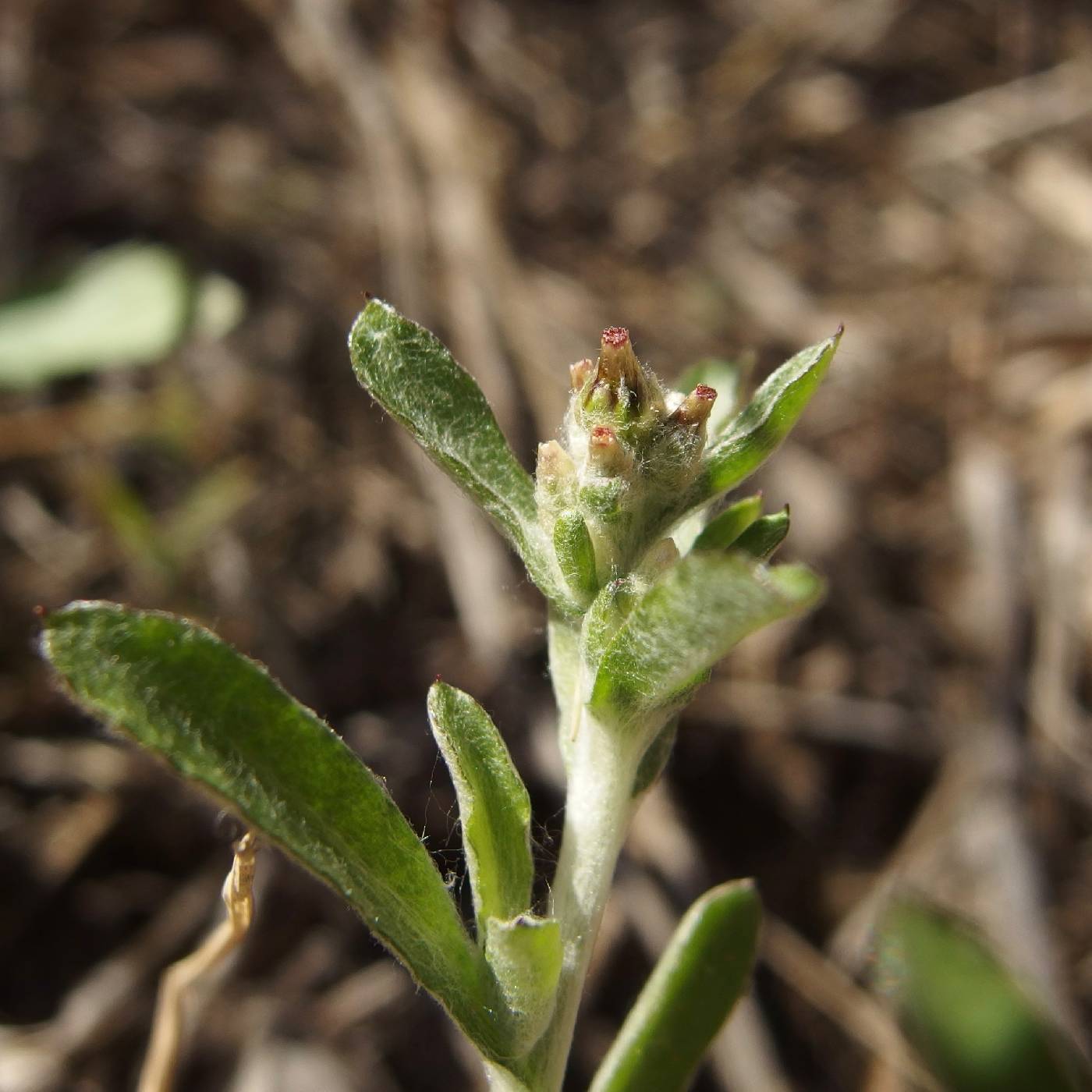
|
Family: Asteraceae |
Annuals, biennials, or perennials, (1-)5-65 cm; taprooted or fibrous-rooted [subrhizomatous]. Stems 1+, usually erect, sometimes decumbent-ascending. Leaves basal and cauline; alternate; sessile; blades mostly linear to oblanceolate or spatulate, bases cuneate to ± cordate, margins entire, sometimes sinuate, abaxial faces mostly white or gray and tomentose or pannose-tomentose, adaxial green and glabrescent or glabrous, or grayish and arachnose, loosely tomentose, or subpannose. Heads disciform, usually in glomerules borne in continuous or interrupted, usually spiciform, sometimes paniculiform, arrays (reduced to terminal glomerules in depauperate individuals). Involucres narrowly to broadly campanulate, 2.5-5 mm. Phyllaries in 3-7 series, unequal, mostly brownish to stramineous, sometimes purplish, hyaline, often shiny, distally chartaceous to scarious, eglandular. Receptacles flat (concave in fruit), glabrous, epaleate. Pistillate florets 50-130, more numerous than bisexual florets; corollas all yellow or purplish-tipped. Bisexual florets 2-7; corollas all yellow or distally purplish. Cypselae oblong, slightly flattened, faces with papilliform hairs (myxogenic, their lengths about equaling diams.); pappi readily falling, of 12-28 barbellulate bristles in 1 series (basally connate in smooth rings, falling as units). x = 7. Gamochaeta comprises about 50 species (A. L. Cabrera 1961; S. E. Freire and L. Iharlegui 1997) or about 80 species (Cabrera 1977+, part 10), all native to the Americas. Most are known only from South America; some apparently are native to Mexico and the flora area (G. L. Nesom 2004b). Some species are strongly weedy and have extended non-native ranges. Because of inconsistencies in the identification of those species, it has been difficult to evaluate the overall distributions of the widespread species. The distinctiveness of Gamochaeta was emphasized by A. L. Cabrera (1961, and in later floristic treatments of South American species) and by other botanists who have treated it as a separate genus in the last decade. The genus is distinguished by its combination of relatively small heads in spiciform arrays, concave post-fruiting receptacles, truncate collecting appendages of style branches in bisexual florets, relatively small cypselae with minute, mucilage-producing papilliform hairs on the faces, and pappus bristles basally connate in smooth rings and released as single units. It seems likely that most species are primarily autogamous, in view of the tiny, non-showy heads that barely open through flowering. The consistency of vegetative and floral features in some of the species supports this hypothesis. In the flora area, some species have commonly been treated as variants within Gamochaeta purpurea; distinctions are evident in the field, where it is common to find as many as five species growing in proximity without intergradation. Species of Gamochaeta are distinguished by differences primarily in root form, leaf shape, nature and distribution of indument, and phyllary morphology. Chromosome counts have been reported for some species; because of the unreliability of identifications, vouchers for those counts should be restudied.
|



